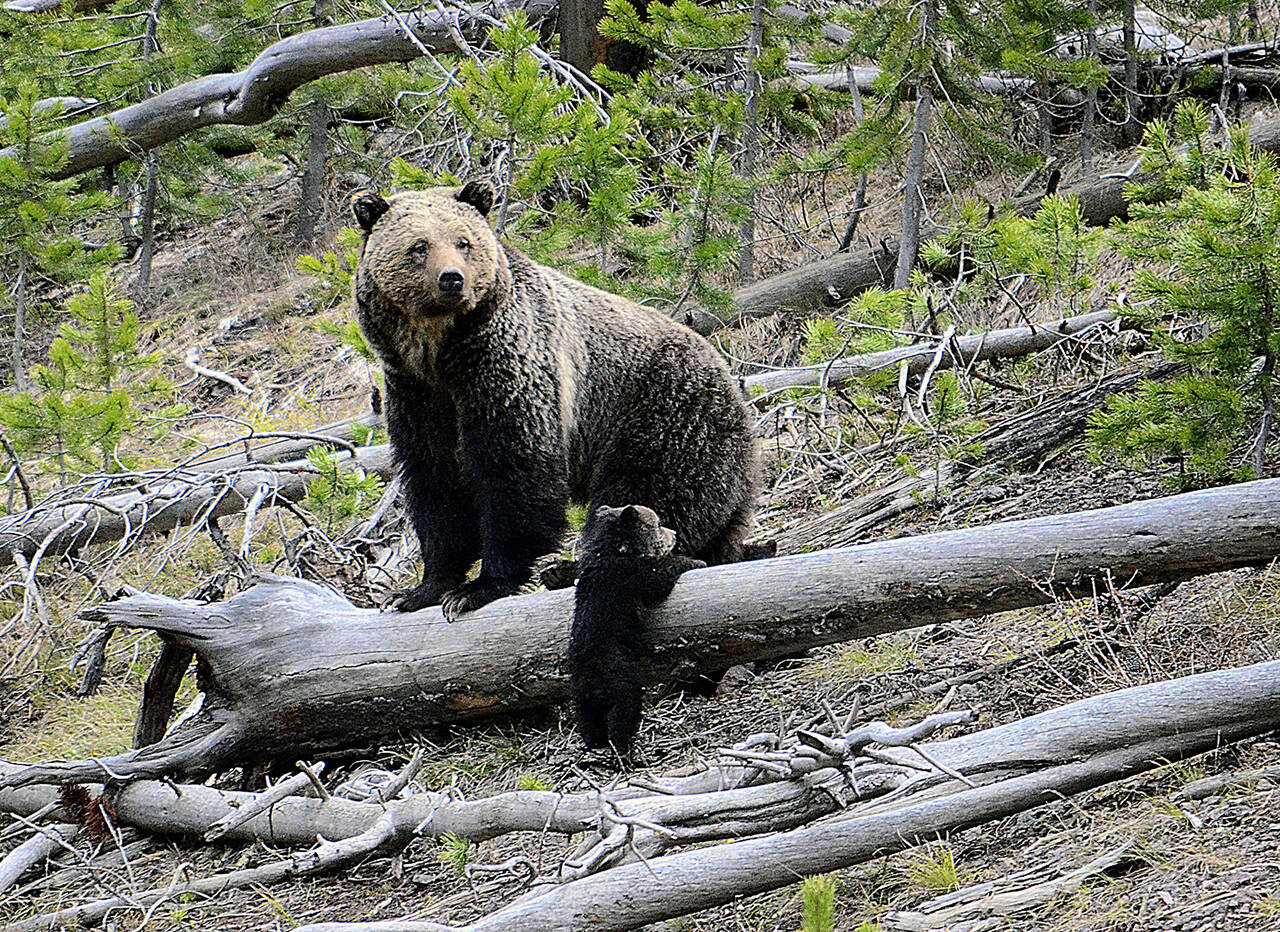By The Herald Editorial Board
Just as bears in the wilderness are beginning their months of hibernation, a plan to reintroduce grizzly bears to a nearly 10,000-square-mile ecosystem of national park, national forest and wilderness lands in Washington state’s North Cascades is waking from a Trump-era slumber.
The National Park System and the U.S. Fish and Wildlife Service are restarting an environmental review of a proposal that would seek to slowly reintroduce grizzly bears to a 9,800-square-mile area — which includes Snohomish County’s Mount Baker-Snoqualmie National Forest and the Glacier Peak Wilderness — by moving bears from elsewhere in the western U.S. to the North Cascades with the aim of establishing a self-sustaining population of 200 bears in as few as 25 years or as many as 100 years.
The process resumes with an online public hearing today at noon and continues with online meetings on Nov. 18 and Dec. 1 and 2.
The review of the reintroduction plan has a history that stretches back decades. A recovery plan was first proposed 25 years ago that recommended the gradual reintroduction of grizzlies to their former range in Washington state, preceded by studies that began in the 1980s. While some estimates have said there could be an existing population of about 10 grizzly bears in the North Cascades — some of them ranging between the U.S. and Canada — the last confirmed sighting in the state was in 1996.
About 1,000 grizzly bears — listed as an endangered species — are estimated to live in northwestern Montana, another 1,000 in the Greater Yellowstone Ecosystem in Wyoming, Idaho and Montana and up to about 100 in northern Idaho.
The reintroduction plan was nearing completion of an extensive public comment process — shelved and reintroduced during the Trump administration under then-Secretary of the Interior Ryan Zinke — only to be halted in the summer of 2020 following Zinke’s resignation over ethics allegations and a decision by his replacement to end the process.
The return of grizzly bears to the North Cascades would reintroduce an important player to the wilderness ecosystem missing since the bears were nearly wiped out by hunting and encroachment on their range in Washington. Grizzlies play an important ecological role in forests — in particular for what bears are famous for doing in the woods — which distributes nutrients and seeds. Additionally, their rooting for bulbs, roots and insects contributes to a healthy ecosystem.
“Our people and the grizzly bear coexisted for 10,000 years here before the first Europeans came into this area,” Scott Schuyler, a policy representative for the Upper Skagit tribe, told The Washington Post. “When you have a healthy ecosystem in place, the bear will be there, should be there, just as all the other creatures. Its role is very significant.”
During the earlier gathering of public comment, concerns were raised for human safety and for potential depredation losses for ranchers.
Grizzlies do attack and kill people. Since 2010, excluding attacks in Canada and Alaska, there have been 11 fatalities attributed to grizzly bears in the West. Yet, drownings, vehicle accidents and falls have been the leading cause of deaths in national parks.
In areas in the Western U.S. with grizzly populations, there are reports of livestock depredation, but Montana’s Wildlife Services reports that wolves and coyotes are responsible for most livestock losses of sheep and cattle, losses that are reimbursed by the state. The Wyoming Game and Fish Department reports grizzlies as responsible for 46 percent of livestock losses in 2019, costing the state $646,000 in grizzly reimbursements. But that state also has paid out nearly $300,000 to farmers for the loss of crops to elk.
Washington state’s Department of Fish and Wildlife also allows for compensation of ranchers and farmers for livestock depredation by black bears, cougars and wolves.
Considering that reintroduction plans are likely to start small with placement of bears in the farthest reaches of the 9,800 square miles of wilderness, interactions with humans and livestock are likely to be infrequent for decades. After federal protections began in the Greater Yellowstone Ecosystem in the mid-1970s, grizzly populations rebounded from fewer than 150 grizzly bears to about 728 bears today within its 9,200 square miles, a higher concentration of bears than is sought for the North Cascades.
The very word “wilderness” implies something that should be beyond the complete control of humans, yet something that remains of value. When there is an opportunity to bring back something that has been lost in nature because of human interference, there’s an obligation to wake from a bureaucratic slumber and provide for that restoration.
Grizzly meetings
To watch and provide testimony the four online hearings and to learn more about the proposal go totinyurl.com/NPSgrizzlyMeet.
Talk to us
> Give us your news tips.
> Send us a letter to the editor.
> More Herald contact information.

























